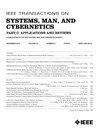On the behavior-based architectures of autonomous agency
IEEE Transactions on Systems Man and Cybernetics Part C-Applications and Re
Pub Date : 2002-08-01
DOI:10.1109/TSMCC.2002.804445
引用次数: 37
Abstract
A number of autonomous robots with varying degrees of reactive functionality have been built, based on different architectures. We review the foundations, limitations, and achievements of a number of architectures of such autonomous agents from the three categories: (1) reactive; (2) deliberative; and (3) hybrid. Most of these architectures contain behaviors. The principle of avoiding an explicit representation of goals in the purely behavior-based robots has limited their achievements to simple tasks like box pushing, pipe inspection, and navigation. This paper makes two contributions: (1) reviewing autonomous agent architectures and (2) proposing a new class of architectures where behaviors are coupled and/or markers are introduced in environment, without a planner or sequencer and without an explicit representation of goals and investigating tradeoffs in these architectures. We develop a model of behaviors, environmental modification and goals and then show how the behavior-based robots can be made goal-directed. The tradeoffs in increasing their goal directedness are examined. Defining the notion of coupling that captures dependency within the internal structure of a behavior space, it is shown that more complex goals demand higher coupling or more behaviors or a modification to the environment. These novel tradeoffs show a new spectrum of architectures for integrating goals and the behavior-based reactive functionality.基于行为的自主代理体系结构研究
基于不同的体系结构,已经构建了许多具有不同程度反应功能的自主机器人。我们从以下三个方面回顾了一些自主代理架构的基础、局限性和成就:(1)反应性;(2)协商;(3)混合型。这些体系结构中的大多数都包含行为。在纯基于行为的机器人中,避免明确表示目标的原则将它们的成就限制在简单的任务中,如推箱子、检查管道和导航。本文做出了两个贡献:(1)回顾了自主代理体系结构;(2)提出了一类新的体系结构,其中行为是耦合的,并且/或者在环境中引入了标记,没有计划器或序列器,也没有明确的目标表示,并研究了这些体系结构中的权衡。我们开发了一个行为、环境改变和目标的模型,然后展示了如何使基于行为的机器人以目标为导向。在增加他们的目标指向性的权衡进行了审查。通过定义捕获行为空间内部结构中的依赖关系的耦合概念,可以看出更复杂的目标需要更高的耦合或更多的行为或对环境的修改。这些新颖的权衡显示了集成目标和基于行为的响应性功能的新体系结构。
本文章由计算机程序翻译,如有差异,请以英文原文为准。
求助全文
约1分钟内获得全文
求助全文
来源期刊
自引率
0.00%
发文量
1
审稿时长
3 months

 求助内容:
求助内容: 应助结果提醒方式:
应助结果提醒方式:


